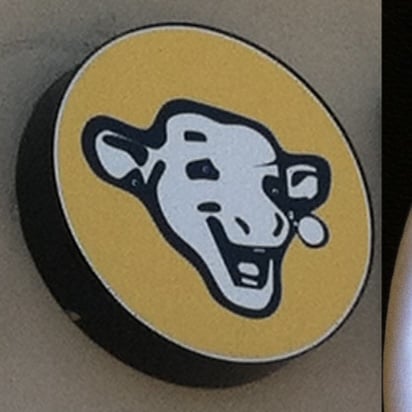

This is mentioned at the end of the video, from 13:17. So clickbait, but at least this important new theorem is included


This is mentioned at the end of the video, from 13:17. So clickbait, but at least this important new theorem is included
I store it in mariadb
Not self hosted, but I use Windy for general weather predictions, it has some graphs if you click on a city.
If you love graphs meteo.pl has some nice graphs, but they are static, and only for Poland and neighbouring countries. Click meteogram on the top left and zoom in, than click on a red dot. E.g. this is for this week for Warsaw:
https://www.meteo.pl/um/metco/mgram_pict.php?ntype=0u&fdate=2025071006&row=404&col=250&lang=en (I can’t embed this image on lemmy)
Have you checked grafana? Here is a related tutorial: https://ibug.io/blog/2024/01/weather-forecast-with-grafana/
There is a history dashboard where you can change the date and which sensors you want to display: https://www.home-assistant.io/integrations/history/ You don’t zoom but you have to add dates, same 2 sensors look like this there:

But it depends on the sensor if it supports this long term statistics, by default all data is saved only for 10 days, you can change these settings.
If filtering and zooming is the most important aspect for you this may be not the best solution, as this graph displays are not the best. The most powerful feature is that you can add local data sources.
I already use HomeAssistant and it has a nice graph interface, you can add any data you want. Plus I have a zigbee temp and humidity sensor on the balcony, so I can add local data to the one coming from external sources. E.g. here is a temperature graph, blue is the temperature from OpenWeatherMap, yellow is an indoor sensor, my outdoor sensor’s battery died again… It shows daily mean, min and max for the last 30 days:

You can find built in weather integrations here: https://www.home-assistant.io/integrations/?cat=weather
About this graph card on the ui: https://www.home-assistant.io/dashboards/history-graph/
deleted by creator
On Arch we have AUR, which is basically this. It doesn’t have this approval workflow, but you can vote for packages. Every package has a maintainer, who is responsible. pacman notifies you before update if a package became unmaintained, and you can apply to become a new maintainer, that’s how I became a maintainer of 2 packages.
Since I started using arch I never installed anything the way you describe, everything is already in the AUR.


Install Buster addon, you will never have to solve captchas in the future: https://addons.mozilla.org/en-US/firefox/addon/buster-captcha-solver/


I’m not following smartphone market very closely nowadays, but this is the first time I heard about this manufacturer
Edit: After some research I found it’s a super budget manufacturer, before 2024 they were selling phones only in Asia and Latin America.


Nice! Crossposted to !civ@lemmy.ca: https://lemmy.zip/post/43406962


Do you want to import or record?
To import: star button -> import bookmarks and tracks. Then you can just pick it from your file browser. You can’t use it for navigation, it’s just displayed as an overlay.
To record: Hamburger menu -> Record track


CoMaps has far less features, but that’s the point. Some people love the simplicity, they don’t need all the confusing and overwhelming options of osmand.
Osmand has some performance issues on some devices, but Comaps was generally much more responsive on any device I tried it.
CoMaps has 3d buildings. Its map is very nice, but this is subjective.
CoMaps aims to be fully FOSS, this was not true for its predecessors, OM and Maps.me. Osmand is not fully foss.
If you are perfectly happy with osmand you don’t really need it, but for new users who are only familiar with the very basic interfaces of other commercial map apps, it can be much more welcoming.


The full story is in the Open Letter, but it’s long: https://openletter.earth/open-letter-to-organic-maps-shareholders-a0bf770c
AI summary from this comment from the osm forum:
Concrete Issues Leading to the Open Letter
- Misuse of Donations: Alexander Borsuk allegedly used project donations to cover personal holiday expenses, raising concerns about financial integrity.
- Lack of Financial Transparency: Contributors were consistently denied access to financial information, including total donations received and expenditures.
- Secret Hiring Practices: The hiring of the first full-time developer in January 2024 was kept secret from contributors, who only learned about it months later.
- Closed Decision-Making: Key project decisions, such as agreements with external partners (e.g., Kayak.com), were made without informing or consulting contributors.
- Shareholder Control: The governance structure allowed shareholders to make unilateral decisions, sidelining the input of long-term contributors.
- Conflict Among Shareholders: A significant conflict between shareholders Roman Tsisyk and Alexander Borsuk has led to a breakdown in collaboration, jeopardizing project stability.
- Lack of Accountability: The board, composed solely of shareholders, failed to rotate members or ensure accountability, leading to a stagnant governance model.
- Potential for Profit Motives: Contributors expressed concerns that the project could be sold or monetized for shareholder profit, undermining its community-driven mission.
- Inadequate Communication: Shareholders did not adequately communicate the role of Organic Maps OÜ as a for-profit entity, leaving contributors unaware of its implications.
- Violation of Open Source Values: While the maps generator code is technically available, the version in production contains private changes that are not disclosed, and the server used for downloading maps operates with proprietary elements, contradicting the project’s stated commitment to Free and Open Source Software principles.


We don’t map temporary features: https://wiki.openstreetmap.org/wiki/Good_practice#Don’t_map_temporary_events_and_temporary_features
If the road closure is less than a month long it shouldn’t be on OSM. A lot of people use the map offline, it’s better to have the default “open” state on the map for them.
Clients are free to mix the OSM basemap with their proprietary data. E.g. Magic Earth has some live traffic data from 3rd parties and from its users, and you can report temporary closures in the app as well and it displays them while driving. (Unfortunately it doesn’t consider them for routing)
OSM is not a map service like Gmaps, it’s a geospatial database and a community maintaining the database. OSM by itself is not really usable for end users, CoMaps and others should build their services on top of the data. This is the reason it’s not licensed by some kind of CreativeCommons, but it has its own special license ODbL. It allows easier commercial usage than CC-BY-SA, which was used by OSM before 2012. https://osmfoundation.org/wiki/Licence_and_Legal_FAQ/Why_CC_BY-SA_is_Unsuitable
The routing was not working for the same reason. OSM does not route, as it’s just a database. It just displays a 3rd party routing engine which uses outdated data, from before your change.


You cannot follow everything from everything.
#idm there, you will see posts from !idm@lemmy.zipIf you want to follow all from one account with a Lemmy-like interface, the closest you can get is with Mbin. There you can follow Lemmy communities, Mastodon and Lemmy users. You cannot follow Mastodon hashtags though.


You will get used to it easily. I have used an ultrawide monitor for nearly a decade and I doesn’t even notice this anymore, i remember it was strange at the beginning. You can use btowser addons like this: https://uw.wtf/ if it annoys you. There are similar other addons, search for “ultrawide” in your browsers addon store. I’m sure you can zoom insimilarly in vlc some way, but then you wont see the top and bottom of the movies


Wikipedia has a good article on them: https://en.wikipedia.org/wiki/Banker_horse
The mistery is they don’t know which European ship brought them there and when. There are multiple options.
Mopidy has a dlna plugin: https://mopidy.com/ext/dleyna/
I use this container for mopidy: https://hub.docker.com/r/ivdata/mopidy